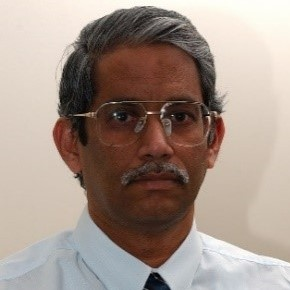Advances/Developments in Sustainable Materials Engineering
A special issue of Sustainability (ISSN 2071-1050). This special issue belongs to the section "Sustainable Materials".
Deadline for manuscript submissions: closed (31 October 2022) | Viewed by 9830
Special Issue Editors
Interests: sustainable/green manufacturing; metal cutting; computer aided manufacturing; CAD; CIM; MEMS/NANO education
Interests: bio-manufacturing; computer integrated manufacturing; tissue engineering for orthopaedics applications and rapid product development
Interests: digital manufacturing; green manufacturing technology; manufacturing automation; engineering and technology education
Special Issue Information
Dear Colleagues,
A large number of materials are used in the consumer and industrial economies of the world that have traditionally utilized non-renewable resources, such as metallic ores, petroleum, etc. Since these materials are non-renewable, they are not sustainable, and researchers have been exploring renewable materials as a means of adding sustainability and also improving the quality of the environment. Sustainable engineered materials in current manufacturing, construction, transportation and electronics industries play a major role in reducing our carbon footprint and effectively promoting a green economy that is profitable and, at the same time, environment friendly. There are a large variety of materials, such as bio-based polymers derived from polysaccharides, composites with natural fibres that can be easily recycled, or highly recyclable materials, such as glass, that can be reprocessed a number of times without requiring additional mineral resources.
Customers of the global market constantly demand new sustainable products based on nanotechnology, recycled or by-product materials, hierarchical composite materials, remanufactured or re-engineered products. In view of the wide interest that is evidenced in this topic in the recent past, it felt necessary to bring together the people associated with research on sustainable materials and engineering under one umbrella. This Special Issue of Sustainability will address and consolidate new research findings that help the industry make informed decisions regarding sustainable materials with the use of new technologies or materials to improve their performances and overall efficacy in servicing their global customers.
In this Special Issue, original research articles and reviews are welcome. Research areas may include (but are not limited to) the following:
- Bio and renewable materials;
- Sustainable Engineered Materials;
- Composite materials with natural fibres;
- Life cycle assessment for sustainable materials;
- Biodegradable polymers;
- Sustainability indicators;
- Sustainable materials for medical applications;
- Sustainable materials in manufacturing applications;
- Sustainable materials in automotive applications;
- Recycling of polymers;
- Waste management;
- Recycling strategies for composite materials.
Prof. Dr. Posinasetti Nageswara Rao
Prof. Dr. Prasad KDV Yarlagadda OAM
Prof. Dr. Immanuel Edinbarough
Guest Editors
Manuscript Submission Information
Manuscripts should be submitted online at www.mdpi.com by registering and logging in to this website. Once you are registered, click here to go to the submission form. Manuscripts can be submitted until the deadline. All submissions that pass pre-check are peer-reviewed. Accepted papers will be published continuously in the journal (as soon as accepted) and will be listed together on the special issue website. Research articles, review articles as well as short communications are invited. For planned papers, a title and short abstract (about 100 words) can be sent to the Editorial Office for announcement on this website.
Submitted manuscripts should not have been published previously, nor be under consideration for publication elsewhere (except conference proceedings papers). All manuscripts are thoroughly refereed through a single-blind peer-review process. A guide for authors and other relevant information for submission of manuscripts is available on the Instructions for Authors page. Sustainability is an international peer-reviewed open access semimonthly journal published by MDPI.
Please visit the Instructions for Authors page before submitting a manuscript. The Article Processing Charge (APC) for publication in this open access journal is 2400 CHF (Swiss Francs). Submitted papers should be well formatted and use good English. Authors may use MDPI's English editing service prior to publication or during author revisions.
Keywords
- biomaterials
- biodegradable materials
- renewable materials
- sustainable engineered materials
- recycling
- medical applications
- automotive applications
- additive manufacturing







